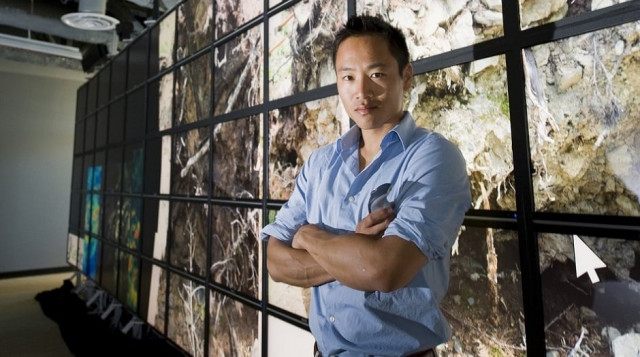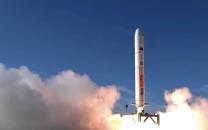The explorer who built two companies from his search for the tomb of Genghis Khan
The Valley of the Khans project was a quest to discover the tomb of Genghis Khan

Dr. Albert Lin. Photo credit: Calit2 / Erik Jepsen
Dr. Albert Lin is an explorer in both senses. An engineer with a Ph.D. in material science, a Research Scientist at the University of San Diego, an Emerging Explorer of the National Geographic Society, and an entrepreneur, Albert has braved the uncharted both in the field and in technology. He’s slated to share more about his experiences at a talk in Singapore on August 30.
7 Pakistani startups to look out for in 2016
As a member of the National Geographic Society, Albert is part of a heritage that goes back to one of the world’s most eminent technologists and entrepreneurs; Alexander Graham Bell, who was the Society’s second president from 1898 to 1903.
“You wonder why a technologist would be associated with the National Geographic Society,” Albert tells Tech in Asia. “I think that we innovate, we build technologies with a purpose: to feed our curiosity, to look further, go deeper. We build these tools and we innovate because we’re problem solvers, but ultimately we’re driven to answer that desire to see what’s beyond the unknown.”
Down to the Valley
We talk a lot about Silicon Valley around here, but Albert is best known for another one: the Valley of the Khans project was a quest to discover the tomb of Genghis Khan. Albert traveled to Mongolia numerous times, exploring remote regions and learning more about the culture of the nomadic people there. In the process, he became entranced by the legend of the 12th century Mongolian warlord.
“I spent multiple summers on these epic expeditions in these very remote regions in Mongolia. I fell in love with this culture and history, which I thought of as my own,” he says.
There was a problem, however: the region in Mongolia where the tomb is supposed to lie is considered sacred ground by the locals, so much so that any disturbance to it would have dire cultural consequences – and that’s without even touching the legends about it bringing about the end of the world!
So Albert and his team came up with a way of doing non-invasive research using satellite imagery and ground-penetrating radar. He was inspired to do that by fellow National Geographic Society member and University of San Diego researcher Maurizio Seracini.
Maurizio and his team have been searching for years for a long-lost masterpiece by Leonardo Da Vinci, a painting called The Battle of Anghiari. In 2012, the team announced they believed it was hidden in a wall cavity in Florence, Italy, by scanning the wall with high-frequency, surface-penetrating radar.
Five Pakistani startups to take part in US entrepreneurship programme
The techie approach led to a new problem for Albert’s team: the immense volume of data to go through. “It was the needle in a haystack problem, where you don’t even know what the needle looks like,” he says.
The team decided to ask for help with this – from the entire world. The online platform for the Valley of the Khans went live in 2010. It allowed anyone visiting the website to go through as many images as they wanted, and mark unique formations and interesting landmarks for the mission.
The tomb of Genghis Khan proved too elusive even for the eyes in the sky, and remains undiscovered so far (so does Leonardo’s painting, for that matter). However, Albert and his team went on to build a company with their tech, called Tomnod (“big eye” in Mongolian).
Adventure capital
Tomnod was acquired in 2013 by satellite imagery provider Digital Globe. Its tech was famously used in the search for the vanished Malaysia Airlines 370 flight. The platform is still live for research projects using the power of the crowd – right now it’s being used to help researchers track the population of Weddell seals in Antarctica and bird migration in North America, among other projects.
While the Tomnod team stayed on, Albert went back to university. “[The Tomnod tech] was a byproduct of my ideas for solving problems, but my heart really lies in exploration, in being out there in the field looking for new things and trying to understand more about the human experience,” he says.
His new project is called Planet3, an education-focused enterprise that also uses real-world data to create game-based experiences for the classroom.
Like any good founder, Albert stresses that his team was a big part of the journey so far. Most of the original team that created the Tomnod tech were people Albert knew through his Ph.D., who specialized in computer science, machine learning, computer vision, and so on.
This Pakistani beauty startup just raised $280k seed round
More importantly, a lot of those people were his climbing buddies. Together they found themselves literally in life or death situations. “Because of that, we trusted each other so much that we were able to depend on each other for our different qualities.”
Trust is imperative, because building and running a company is “a swashbuckling adventure in itself,” Albert points out.
“The cultivation of an idea beyond its fragile state into something that can expand and flourish takes so much care and attention. And it’s the unity of that team that’s going to lead to the success of your idea, your expedition, your technology. There is no difference between creating a team to start a company and creating a team to take deep into the field, into the most intense environments,” he adds.
This article originally appeared on Tech in Asia.



















COMMENTS
Comments are moderated and generally will be posted if they are on-topic and not abusive.
For more information, please see our Comments FAQ